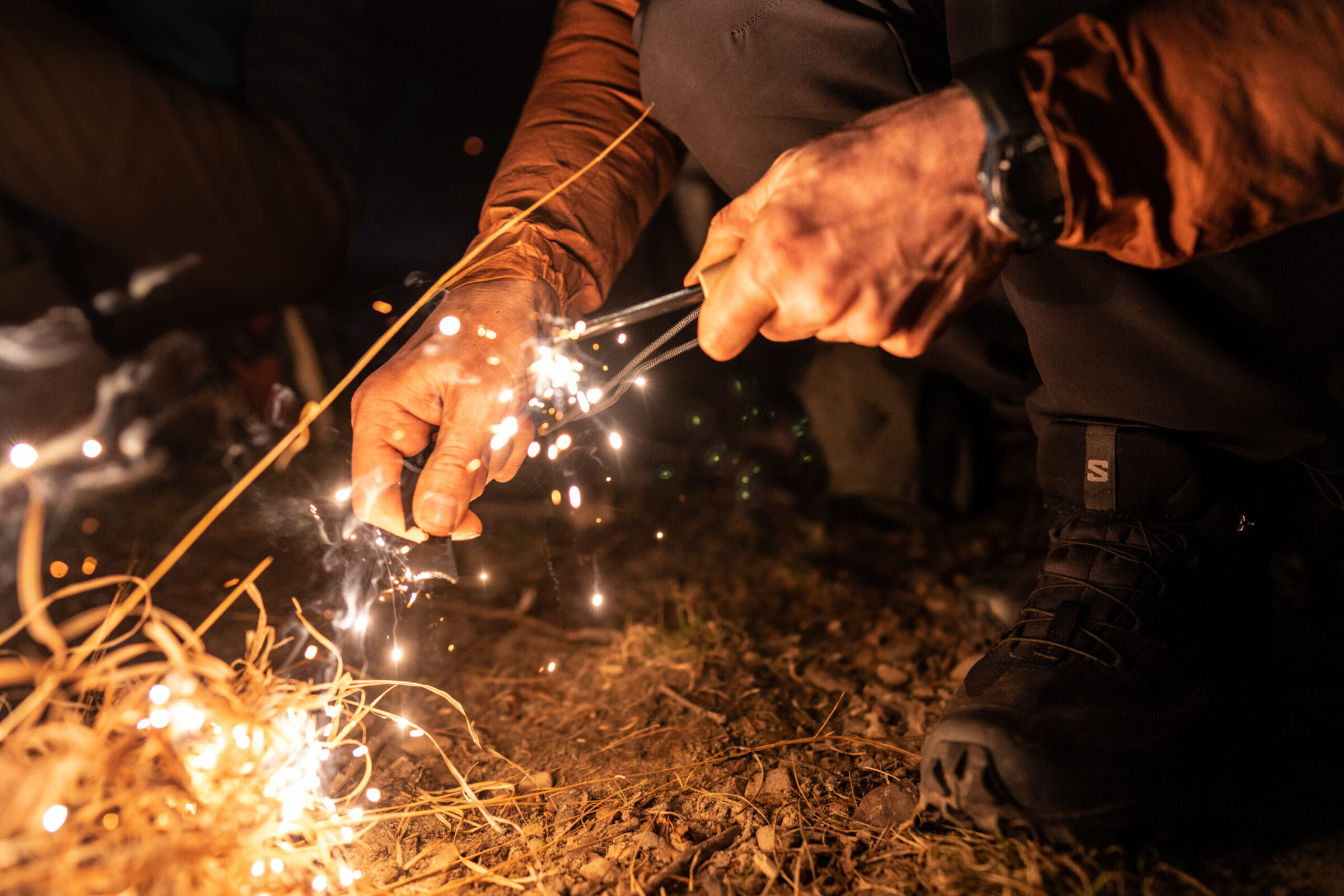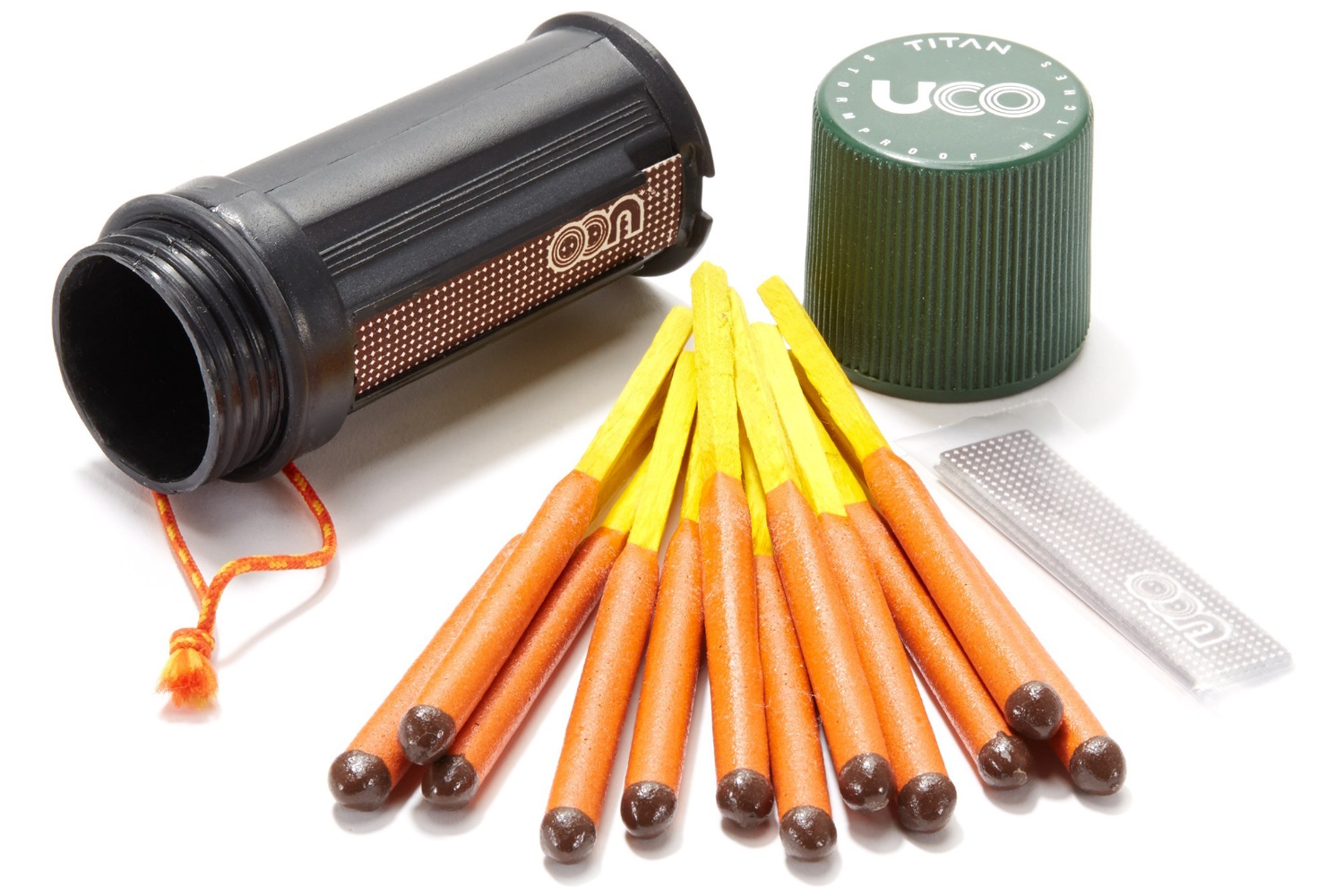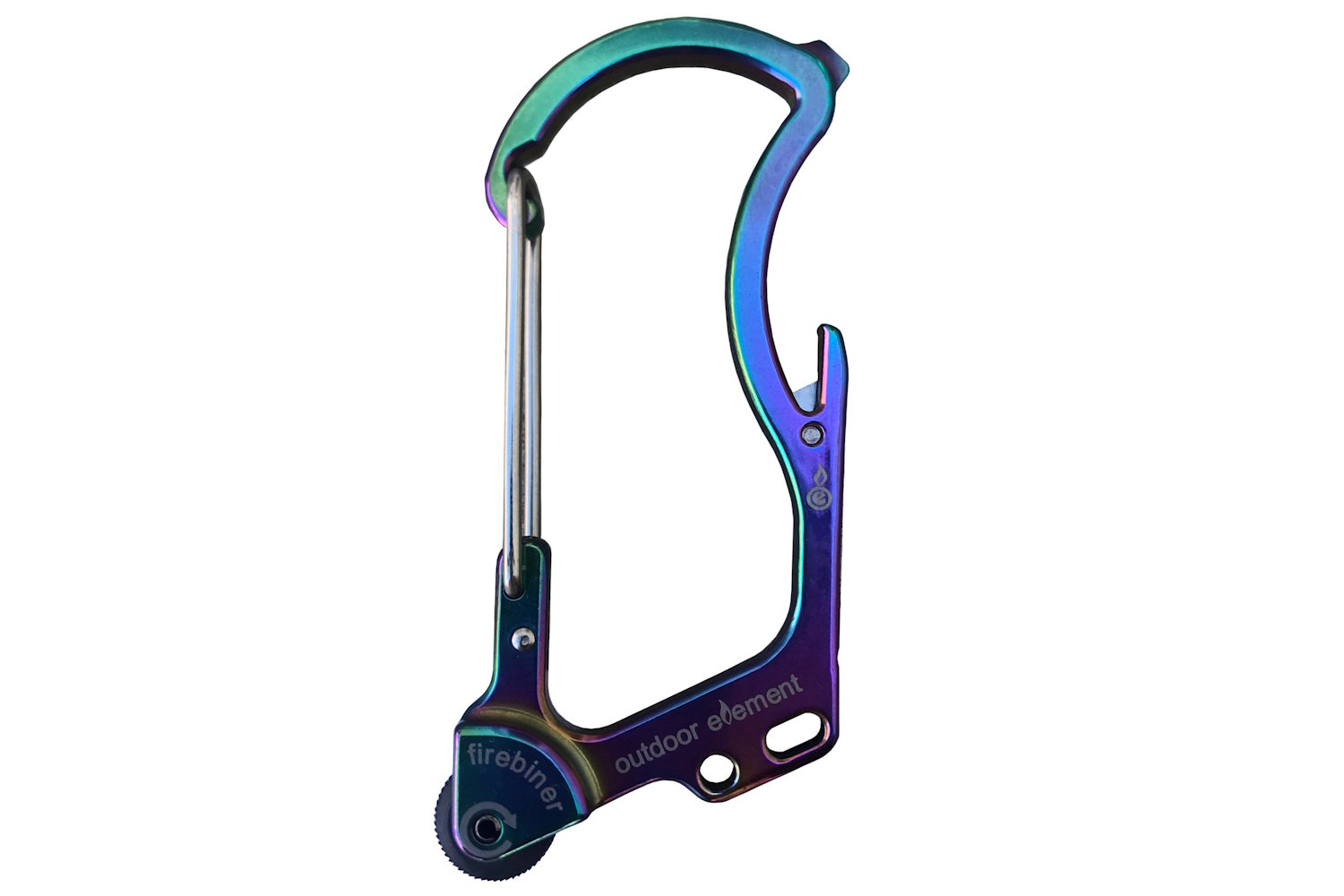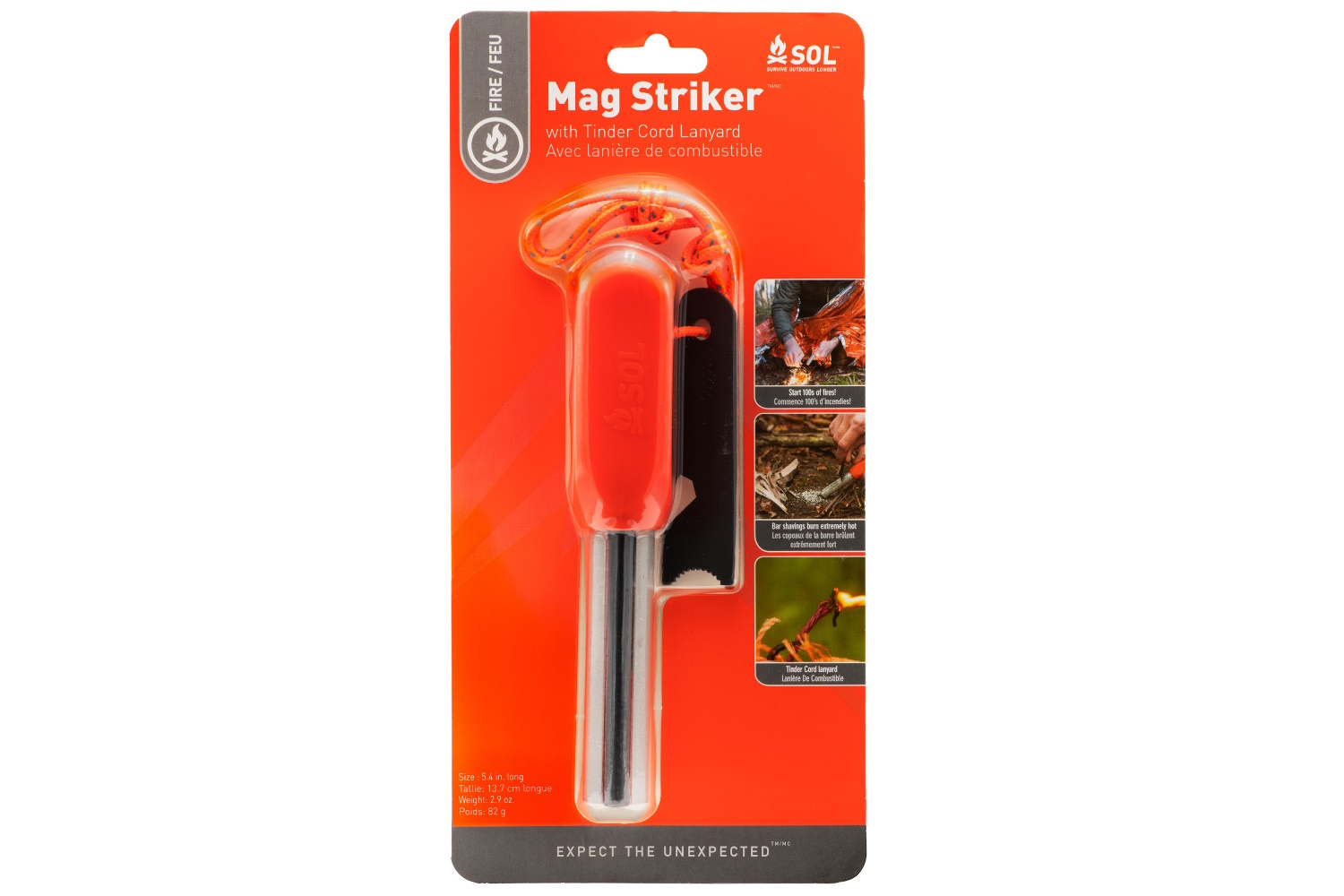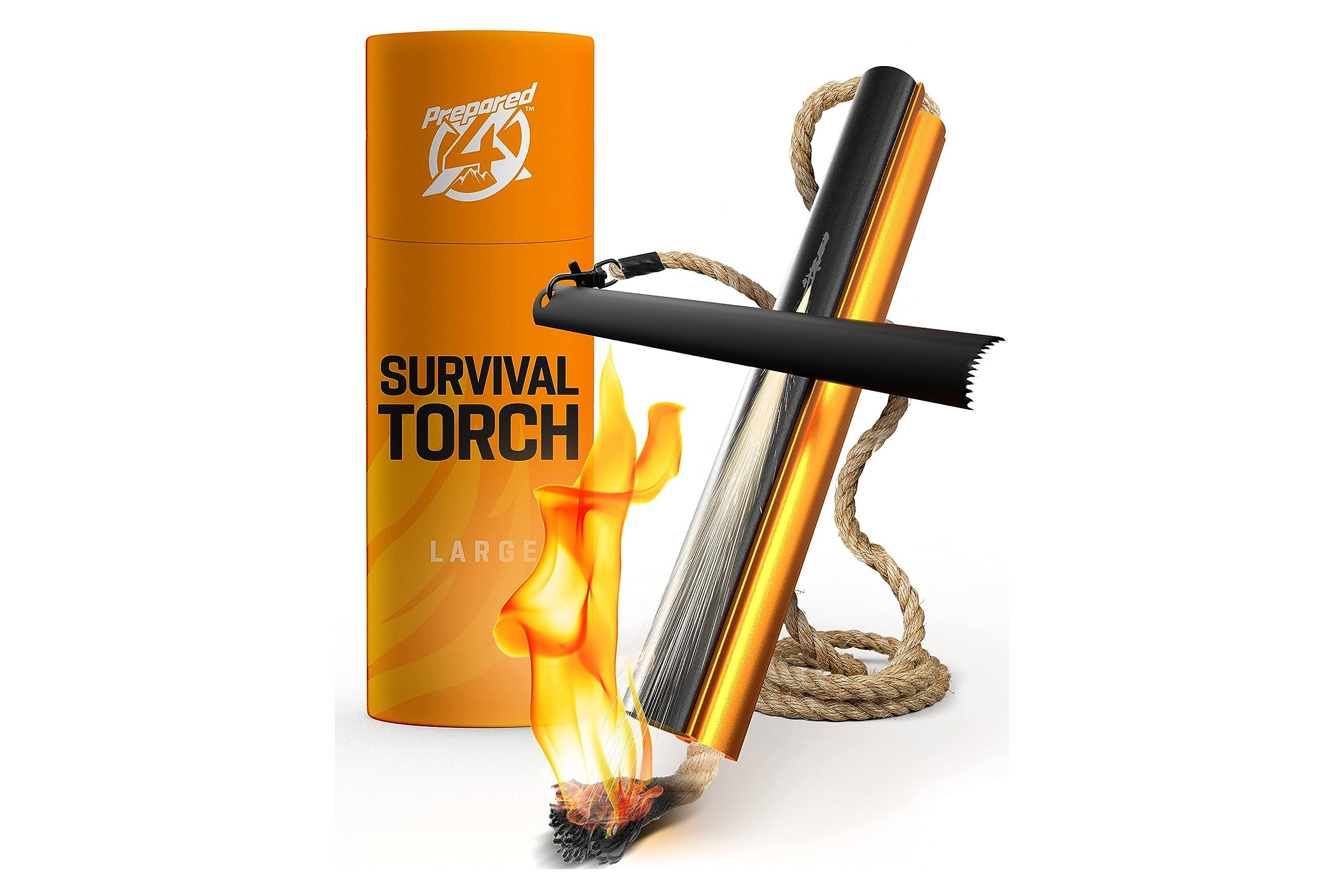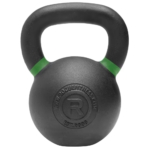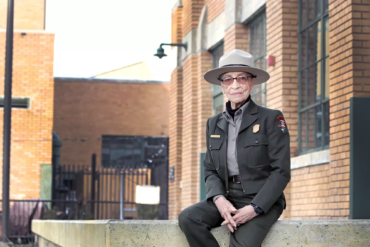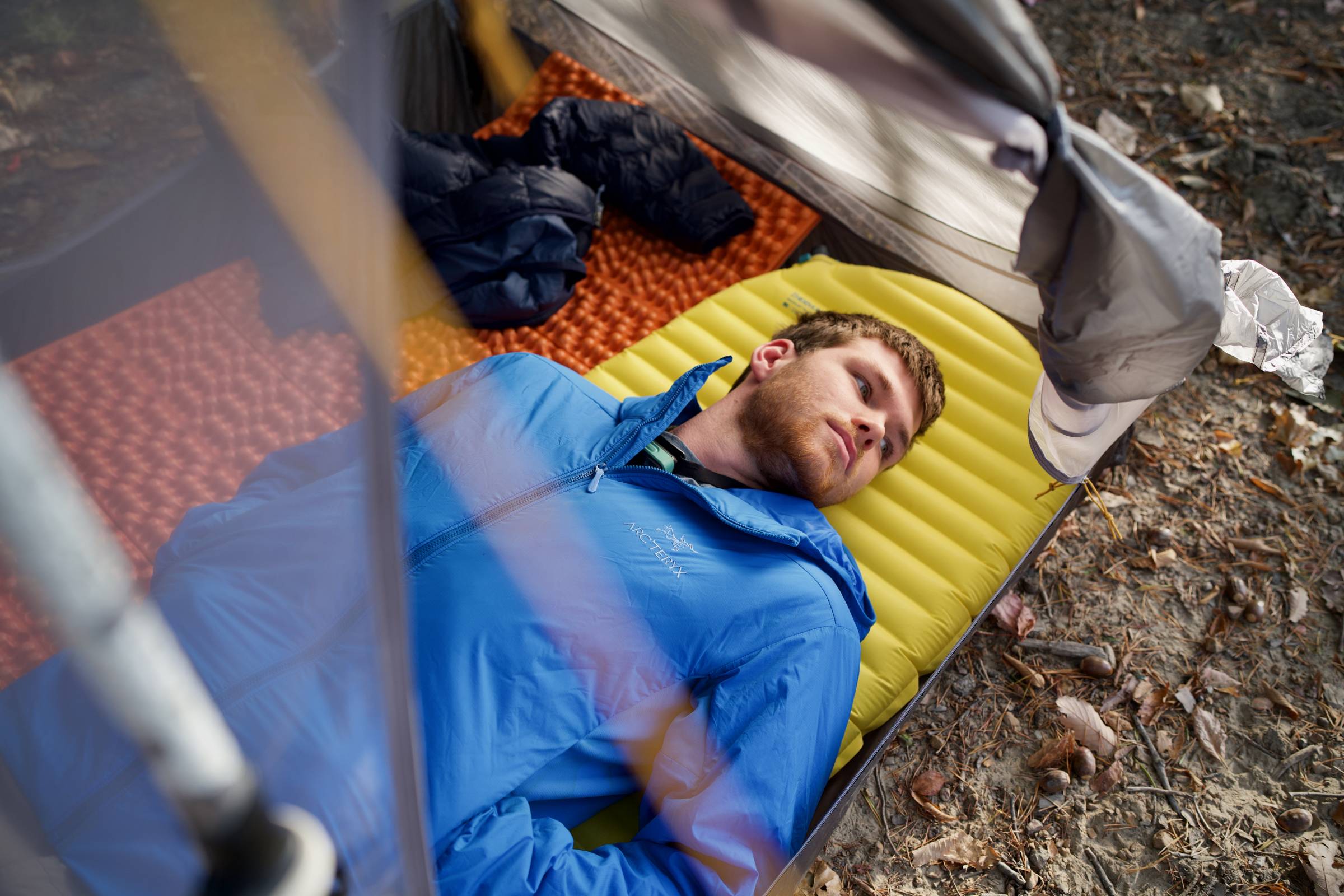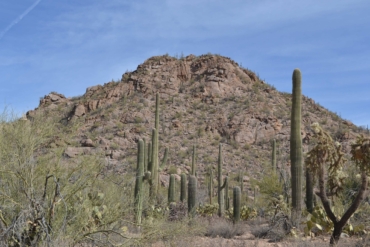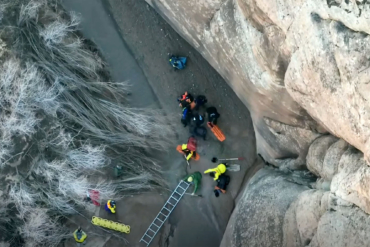Whether you’re camping, hunting, backcountry skiing, or stranded on the side of the road, packing one of the best firestarters available is a surefire way to prepare for an unexpected turn of events. Over the past 5 years, we’ve tested over 30 options to help you choose the best firestarters for your needs.
Author and Senior Editor Chris Carter has thrown together his fair share of fires during camping trips and survival situations alike all over the world. Since 2021, he has tested two dozen of the best fire starters available and gathered insights from GearJunkie’s team of bushcraft enthusiasts. In 2024, editor Chris Kassar took over testing. We’ve spewed sparks over countless tinder bundles in all sorts of conditions and climates to create the selection you see below.
If you’re looking for a compact, lightweight, yet reliable option, our top choice, the Wolf & Grizzly, is hard to beat. But, if you simply need budget-friendly tinder to match with your favorite spark-throwing device, then the Light My Fire MayaStick-on-a-Rope is ideal.
As a note of caution: Know your local fire restrictions and think carefully about whether you actually need a fire. Never leave your fire unattended, and before leaving, completely saturate it until the ground beneath it is wet and cold. Unattended campfires are the cause of some of the largest, most costly natural disasters in the U.S., consuming millions of acres of forest and destroying entire communities. A fire can save your life in cold, wet conditions, but we must be responsible outdoors people.
Editor’s Note: We updated our Firestarters Guide on May 15, 2025, to expand our testing section and to add the outdoor element Firebiner, a simple and reliable firestarter that doubles as a multi-tool.
The Best Firestarters of 2025
Top Picks
Wolf & Grizzly
- Material: Ferro rod, steel striker, paracord with jute core
- Lifespan: 20,000 strikes
- Size: 4.9” x 0.8”
- Other Features: Emergency tinder, can be sharpened and stacked on the rod
Pros
- Lightweight and compact
- Long lifespan
- Simple design
Cons
- No space for grip
Light My Fire MayaStick-on-a-Rope
- Material: Pine
- Lifespan: Enough for more than 10 fires
- Size: 56.0” x 0.8” x 0.8”
- Other Features: 80% resin content, rope attached for easy carry
Pros
- Highly combustible in any conditions
- Can be used with any ignition source, affordable
Cons
- Need to carry separate igniter
UST BlastMatch
- Material: Flint-based bar with plastic carrier
- Lifespan: 4,000 strikes
- Size: 4.1” x 1.4”
- Other Features: One-handed use, 360-degree flint rotation, waterproof housing
Pros
- Easy to use
- Fits in small pockets
- Distributes wear and tear
Cons
- Method takes some work to get down
- Doesn’t last as long as others
UCO Stormproof Sweetfire Fire Starter Points – Package of 8
- Material: Bagasse (Sugarcane waste), infused with vegetable wax
- Lifespan: 8 matches that burn for 7 minutes each
- Size: 3.2” x 2.6” x 1.2” (individual); 5.5" x .75" x .4" (box)
- Other Features: Each match point has a strike-able tip that can conveniently be used with the striker on the box
Pros
- Renewable resource
- Burns through wet/damp materials with ease
- Affordable and easy to strike
Cons
- Does not hold up well with wind stronger than a moderate breeze
- Single-use ignition
Morakniv Companion Spark
- Material: 3.9″ hardened 12C27 stainless steel blade, magnesium alloy firestarter
- Lifespan: 3,000 strikes
- Size: 9.4” x 4.1” x 2.5”
- Other Features: Firestarter twist locks into the handle
Pros
- Two-in-one knife and firestarter
- Low-maintenance and high-quality knife blade
- Catches on tinder easily
Cons
- Firestarter has a short lifespan
Bernzomatic Trigger Start Torch
- Material: Propane fuel, steel container
- Lifespan: Varies depending on use
- Size: N/A
- Other Features: Burns at 34000 degrees F, self-igniting trigger
Pros
- Lights just about anything
- Easy to use and completely hassle-free
- Long reach of the flame
Cons
- Need to replace fuel more often
- Takes up a lot of space and weight
UCO Titan Stormproof Match Kit
- Material: Unavailable
- Lifespan: 12 matches that burn for 25 seconds each
- Size: 4.125”
- Other Features: 3 replaceable strikers, waterproof and buoyant case
Pros
- Easy to use
- Simple match style ignition
- Worth the price in case of emergencies
Cons
- Limited use
- Screw top is notoriously finicky
More Fire Starters Sure to Heat Things Up
- Material: Titanium-coated stainless steel, replaceable ferro rod
- Lifespan: 3000 sparks
- Size: 5.75” x 3” x 0.25”
- Other Features: Stainless-steel safety blade, screwdriver tip, bottle opener
Pros
- Easy to use
- Reliable fire starting
- Lightweight and compact
- Simple design
- Multi-functional
Cons
- Hard to reload the ferro rod
- Need separate tinder
- Holes for keys are tiny
- Material: Ferro rod, metal striker, cotton tinder, plastic casing
- Lifespan: N/A
- Size: 4.75" x 1.1"
- Other Features: 100 decibel whistle, water-resistant tinder capsule
Pros
- Compact design with striker and ferro rod
- Tinder capsule
- Included whistle
Cons
- Short rod
- Lanyard limits range of motion while striking
- Material: Flint, magnesium, and steel
- Lifespan: Over 100 fires
- Size: 8.66” x 4.13” x 1.18”
- Other features: Bottle opener included on steel striker
Pros
- Robust handle enhances grip
- Magnesium reaches high temperatures for easy lighting
- Great price for a multipurpose tool
Cons
- Heavier than we expected
- Material: Plasma lighter, plastic case
- Lifespan: N/A
- Size: 3.75" x 1"
- Other Features: 120-lumen built-in flashlight
Pros
- Weatherproof design
- Can light a fire in windy environments
- Integrated flashlight
- Rechargeable
Cons
- Not the best battery life
- Material: Ferro rod, 550 paracord, metal scraper
- Lifespan: 12,000 strikes (trad), 15,000 strikes (pro), or 20,000 strikes (fatty)
- Size: 2.5” x 0.31", 0.38", or 0.5"
- Other Features: Paracord lanyard, multitool scraper included
Pros
- Comfortable wood grip
- Affordable
- Multifunctional, effective scraper
Cons
- Ferro rod length is a bit short
- Material: Ferro rod, steel striker, pine tinder
- Lifespan: Five pine tinder shreds burn up to 8 minutes each; the lifespan of ferro rod and striker depends on the frequency of use
- Size: 1.5” x 6.63” x 6”
- Other Features: Five paraffin-coated pine tinder bundles, collapsible stainless steel bellows
Pros
- Has everything you need in one package
- Bellows help you keep the fire going once started
- Affordable
Cons
- Small pieces can be lost easily
- Only five tinder bundles, so you will need more
- Material: Plasma lighter, plastic case, cord lanyard
- Lifespan: 45 uses in one charge (Each use = 7 seconds)
- Size: 4" x 1.4"
- Other Features: 3-foot tinder-cord lanyard, 100-lumen built-in flashlight, 2-hour charge time
Pros
- Dependable in just about any environment
- Easy to use
- Emergency flashlight and tinder
- Quick-charging lithium battery
Cons
- Needs to be charged every so often
- Won’t light anything too wet
- Material: Ferro rod, paracord lanyard, aluminum handle, cotton tinder
- Lifespan: 10,000 strikes
- Size: 3.55" x 0.55" x 0.55"
- Other Features: Tinder capsule, cotton tinder included
Pros
- Perfect dimensions for ferro loops on knife sheaths
- Handy waterproof tinder capsule
- Can add replacement ferro rods
Cons
- Somewhat short rod
- Doesn't come with its own striker
- Material: Plastic, ferro rod, reflective paracord, steel
- Lifespan: 3,000-12,000 strikes
- Size: 3.8" by 1"
- Other features: Striker doubles as a bottle opener
Pros
- Reliable
- Lasts a while
- Works for stoves and fires
- Produces a good spark
Cons
- Bottle opener design could be better
- Material: Ferro rod, aluminum housing, steel striker, wax-infused hemp rope tinder
- Lifespan: Unsure, but rope stays lit for 3+ hours. Ferro rod takes thousands of strikes
- Size: 6" x 0.6" x 1"
- Other Features: Hemp tinder rope and striker included
Pros
- Convenient all-in-one package
- Incredibly easy to fray rope and get it to take a spark
- Rope stays lit for 3+ hours if need be
- Easy to extinguish rope once tinder bundle is lit
Cons
- Ferro rod would get difficult to strike once it wears down past aluminum housing
- Tinder rope is hard to ignite if it gets wet
- Heavier than others
Firestarter Comparison Chart
| Firestarter | Price | Material | Lifespan | Size | Main feature |
| Wolf & Grizzly | $27 | Ferro rod, steel striker, paracord | 20,000 strikes | 4.9” x 0.8” | Emergency tinder |
| Light My Fire MayaStick-on-a-Rope | $4 | Pine | Enough for more than 10 fires | 6.0” x 0.8” x 0.8” | 80% resin content |
| UST BlastMatch | $20 | Flint-based bar with plastic carrier | 4,000 strikes | 4.1” x 1.4” | Waterproof housing |
| UCO Stormproof Sweetfire Fire Starter Points | $6 | Bagasse (Sugarcane waste), infused with vegetable wax | 8 matches that burn for 7 minutes each | 3.2” x 2.6” x 1.2” (individual); 5.5″ x .75″ x .4″ (box) | Natural |
| Morakniv Companion Spark | $30 | Stainless steel blade, magnesium alloy firestarter | 3,000 strikes | 9.4” x 4.1” x 2.5” | Firestarter twist locks into the handle |
| Bernzomatic Trigger-Start Torch | $56 | Propane fuel, steel container | Varies depending on use | N/A | Burns at 3,400 degrees F |
| UCO Titan Stormproof Match Kit | $12 | N/A | 12 matches that burn for 25 seconds each | 4.125” | 3 replaceable strikers, waterproof and buoyant case |
| outdoor element Firebiner | $15 | Titanium-coated stainless steel, replaceable ferro rod | 3000 sparks | 5.75” x 3” x 0.25” | 100-decibel whistle |
| Gerber Fire Starter | $20 | Ferro rod, metal striker, cotton tinder, plastic casing | N/A | 4.75″ x 1.1″ | 100 decibel whistle |
| SOL Mag Striker with Tinder Cord | $14 | Flint, magnesium, and steel | Over 100 fires | 8.66” x 4.13” x 1.18” | Bottle opener included on steel striker |
| Dark Energy Plasma Lighter | $30 | Plasma lighter, plastic case | N/A | 3.75″ x 1″ | 120-lumen built-in flashlight |
| Überleben Zünden Fire Starter | $16 | Ferro rod, 550 paracord, metal scraper | 12,000 – 20,000 strikes | 2.5” x 0.31″, 0.38″, or 0.5″ | Multitool scraper |
| Zippo Firestarter Kit | $22 | Ferro rod, steel striker, pine tinder | Tinder shreds burn 8 min each | 1.5” x 6.63” x 6” | Five paraffin-coated pine tinder bundles |
| SOL Fire Light electric lighter | $28 | Plasma lighter, plastic case | 45 uses in one charge | 4″ x 1.4″ | 3-foot tinder-cord lanyard |
| Exotac Firerod | $33 | Ferro rod, paracord lanyard, aluminum handle, cotton tinder | 10,000 strikes | 3.55″ x 0.55″ x 0.55″ | Waterproof tinder capsule |
| MSR Strike Igniter | $18 | Plastic, ferro rod, reflective paracord, steel | 3,000 – 12,000 strikes | 3.8″ by 1″ | Striker doubles as a bottle opener |
| Prepared4X Survival Torch | $22-25 | Ferro rod, aluminum housing, steel striker, wax-infused hemp rope tinder | N/A | 6″ x 0.6″ x 1″ | Hemp tinder rope and striker included |
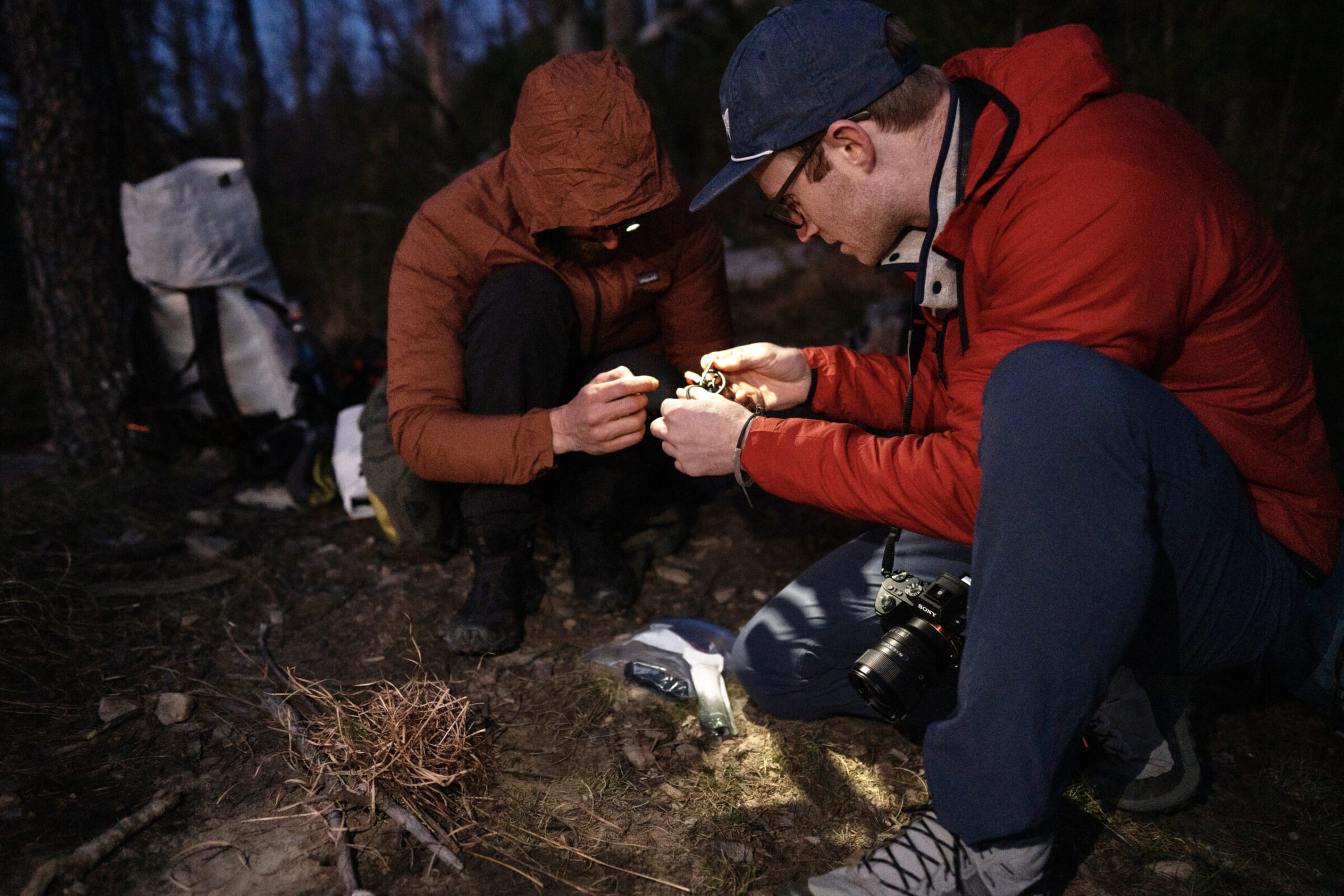
How We Tested the Best Firestarters
Our Expert Testers
From experienced survivalists to weekend warriors stoked on bushcraft, the GearJunkie team consists of outdoor enthusiasts. We all know the importance of being able to start a fire in any conditions. We’ve spent endless hours gathering tinder bundles, snapping sticks, and getting light-headed as we blow flames into life. Fire-making skills are key in the backcountry, whether it’s a campfire to cook dinner over or an emergency heat source.
Author Chris Carter understands the importance of having the means to make fire in any situation. But he also understands that having the skills to do so is imperative. When matches and lighters fail, firestarters rise to the challenge — but only if you know how to use them. Carter has started hundreds of fires with traditional firestarters in various environments.
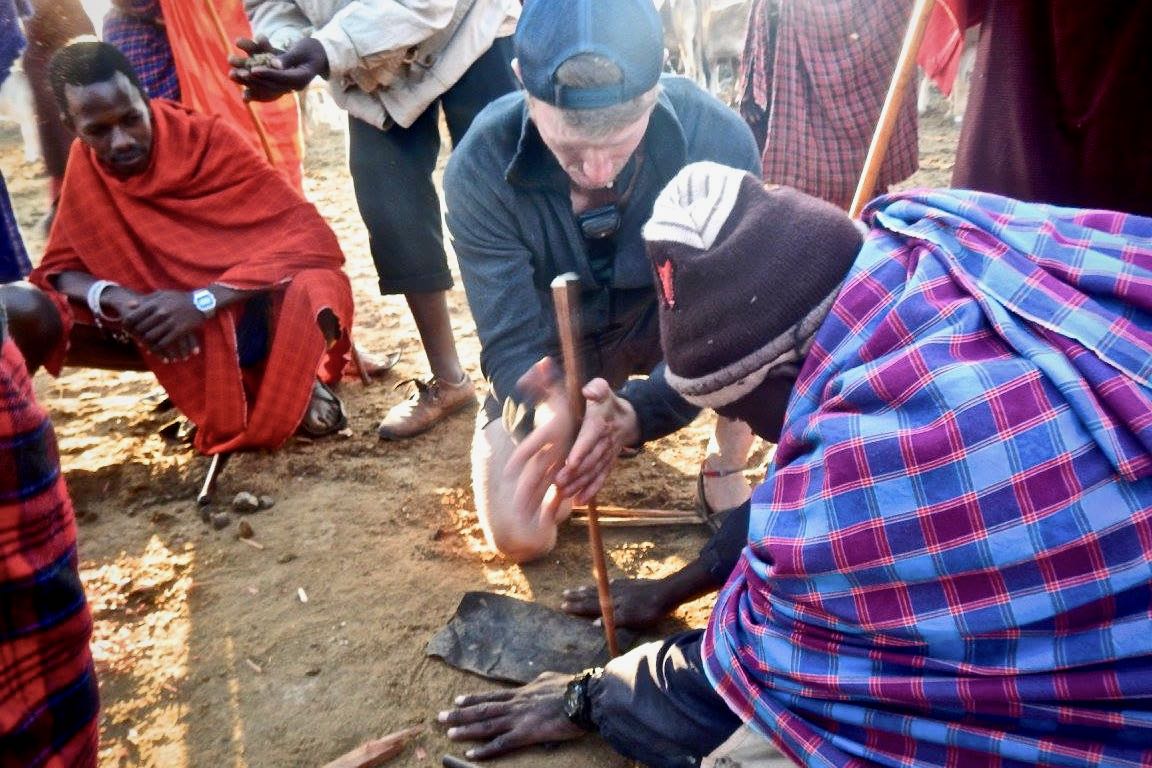
Our Testing Grounds & Process
Carter grew up in the bush of Kenya, East Africa, where he learned a whole slew of primitive skills. Thus, he’s an expert at making fires with flint and steel and hand and bow drills.
While matches offer an easy solution, Carter won’t head into the wilderness without a secondary, reliable firestarting option. For this guide, he accrued several of his favorite firestarters that he’s tested for years. He also added new selections from top brands on the market. He partnered with his other bushcraft friends and threw spark after spark over countless tinder bundles. All of this effort brought you the streamlined selection of firestarters you see today. Editor Chris Kassar implemented Chris’s rigorous testing techniques for the newest additions to our guide.
We know the competition for the firestarter podium is constantly evolving. This is why we’ve slotted this guide into a regular update schedule. We are perpetually talking with experts and bugging brands to cover the most relevant and deserving selection possible.
Check out our guides to other essentials, including the best compasses and hand warmers.
Buyer’s Guide: How to Choose the Best Firestarter
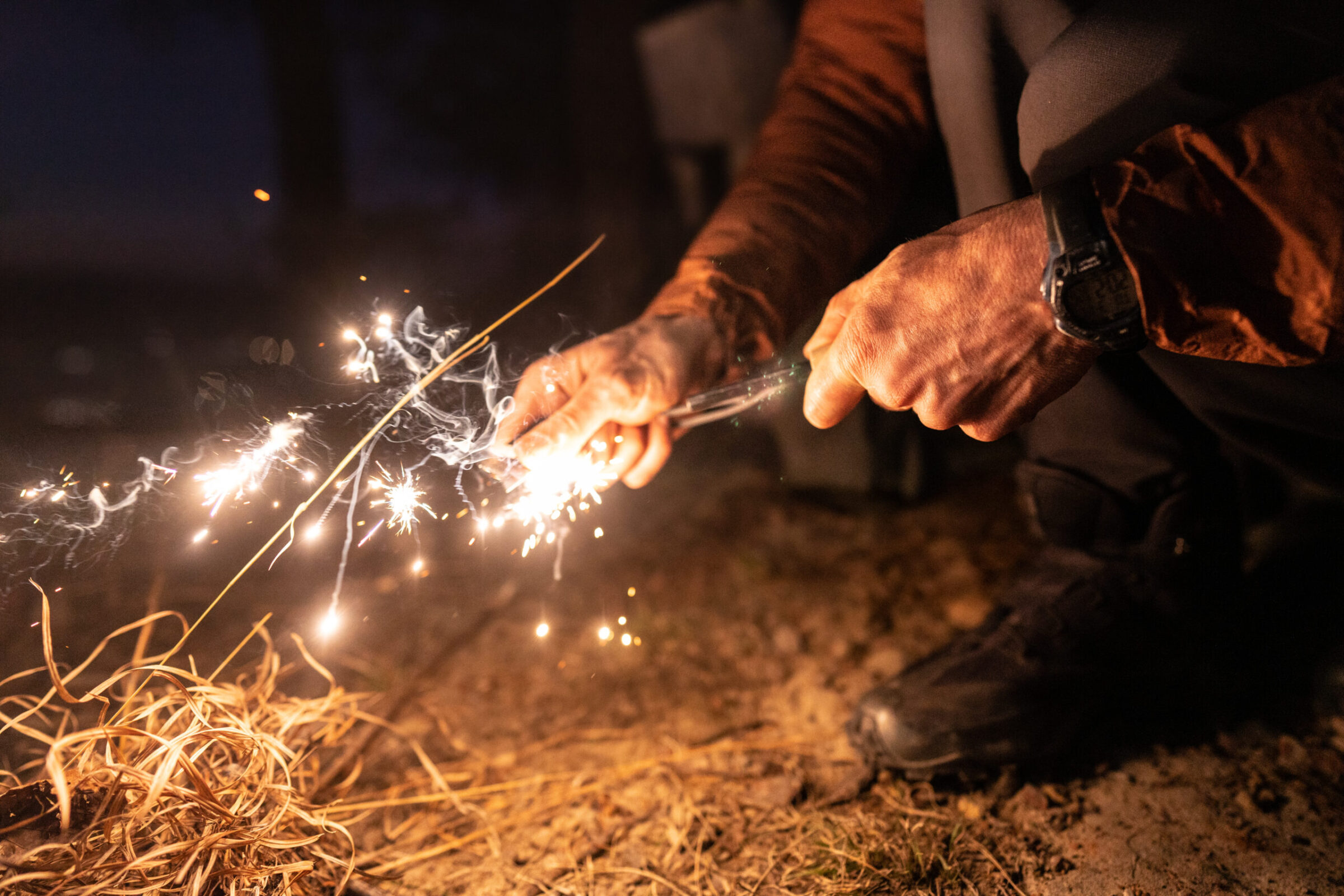
While matches or lighters may be some of the faster ways of starting fires, they aren’t always the most reliable. It’s important to have and know how to use a solid firestarter for when the unexpected happens. You accidentally fall into a river and soak all your gear. You break all your matches, or your lighter runs out of fluid.
Being able to start a fire in any situation improves your chances of survival. We found the top tried-and-true firestarters and tested them for this guide, offering a selection for every type of adventure.
Type of Activity
Different activities require different firestarters. For example, carrying the heavy Bernzomatic Torch on a long-haul backpacking trip could make for a good laugh. But, you’ll regret it pretty quickly.
If you’re going car camping, something bigger and heavier like that will be a much better fit. Backpacking demands lightweight gear that’s easy to bring along. Thus, you’d be much better off with a simple ferro rod and flint firestarter.

Size & Weight
Every ounce counts when backpacking, and every inch of your backpack is valuable space. The little things, like firestarters, are where the ounces can quickly add up. An extra inch of material means less space for food and more weight to carry.
Finding the right balance between size and weight is key to getting the right tool. Too small, and it’s impossible to handle; too big, and you’re lugging extra weight you don’t need.
Ease of Use
At the end of a long day of hiking, you don’t want to fight with your firestarter to get warm. The easier the firestarter is to use, the better. One of the easiest to use on this list is the UCO Titan Stormproof Match Kit.
There are certain ways to make life easier in the backcountry, especially when you’re just starting to learn how to use a firestarter. If you’re new to the skill, pack extra firestarter sticks. They don’t weigh much or take up much space, and they’ll be more than worth it in the long haul. Or, choose one that’s geared at beginners, like the UST BlastMatch, a firestriker that essentially does the work for you.
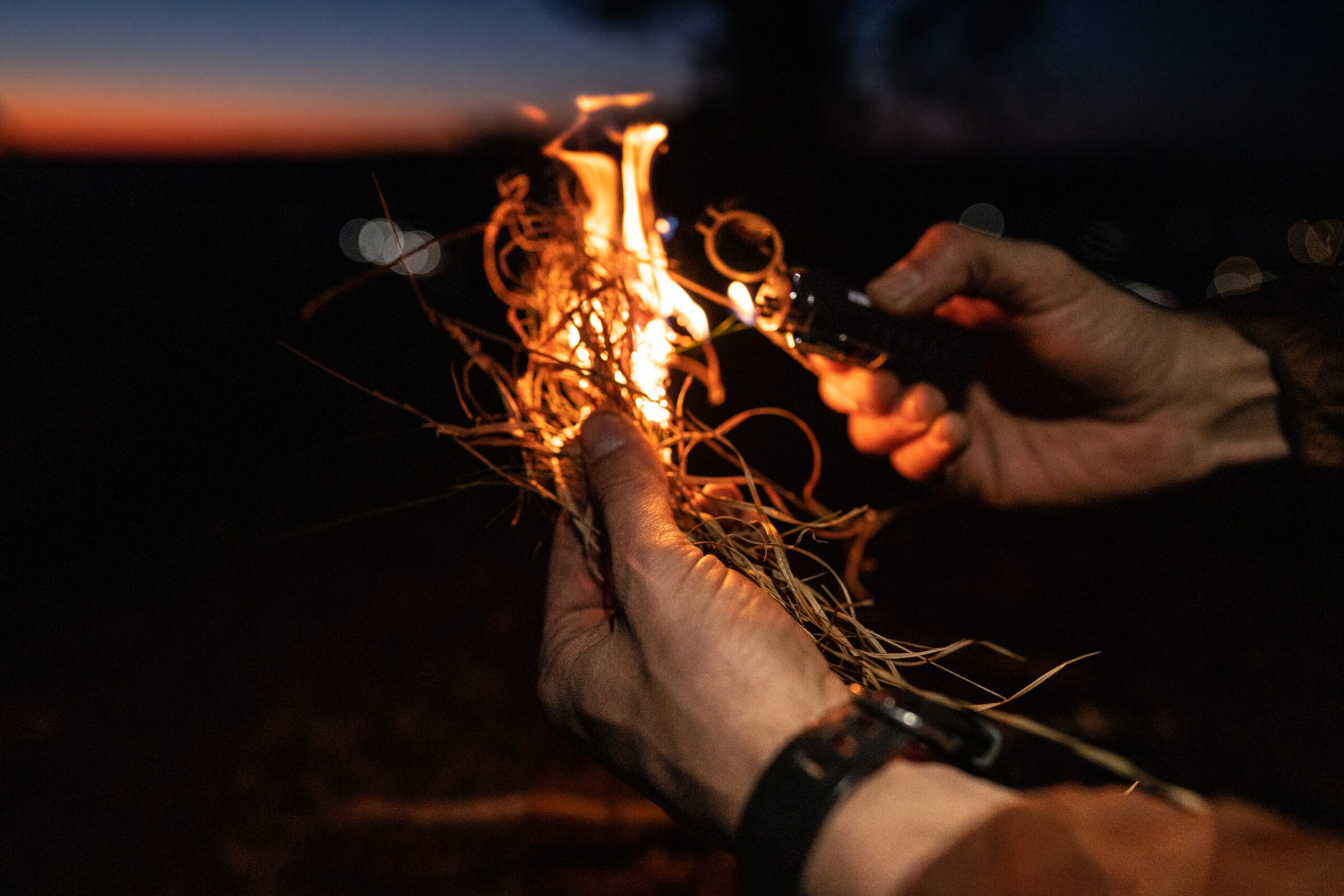
Types of Firestarters
The three primary types of firestarters are flint and steel, ferrocerium rods, and magnesium bars. They can be used in a variety of different scenarios, and each has its place in a firestarting kit. This guide covers other unique firestarters that use electrical sparks, a blowtorch, and even a hot beam of light. But these are the more common starters you’ll see in survival kits.
Flint and Steel
Flint & steel are one of the oldest tried-and-true methods of starting a fire. The flint can be a variety of different hard rocks, such as quartzite or chert. The steel striker component is constructed with a high carbon content and is usually heat-treated. When the steel strikes the rock, it breaks off tiny particles of the metal. They oxidize and ignite when exposed to oxygen.

One of the negatives of flint and steel is how dull the sparks are, and charred cloth or naturally charred materials are usually required to effectively hold the spark and turn it into a flame. The value of flint and steel lies in their ability to be easily reproduced with readily available materials.
Ferrocerium Rods (Ferro Rod)
The sparks created by a ferro rod are extremely hot compared to those of flint and steel. This makes it easier to light a dry tinder bundle. The Wolf and Grizzly, the outdoor element Firebiner and the Zippo Fire Starter Kit, use a ferro rod.
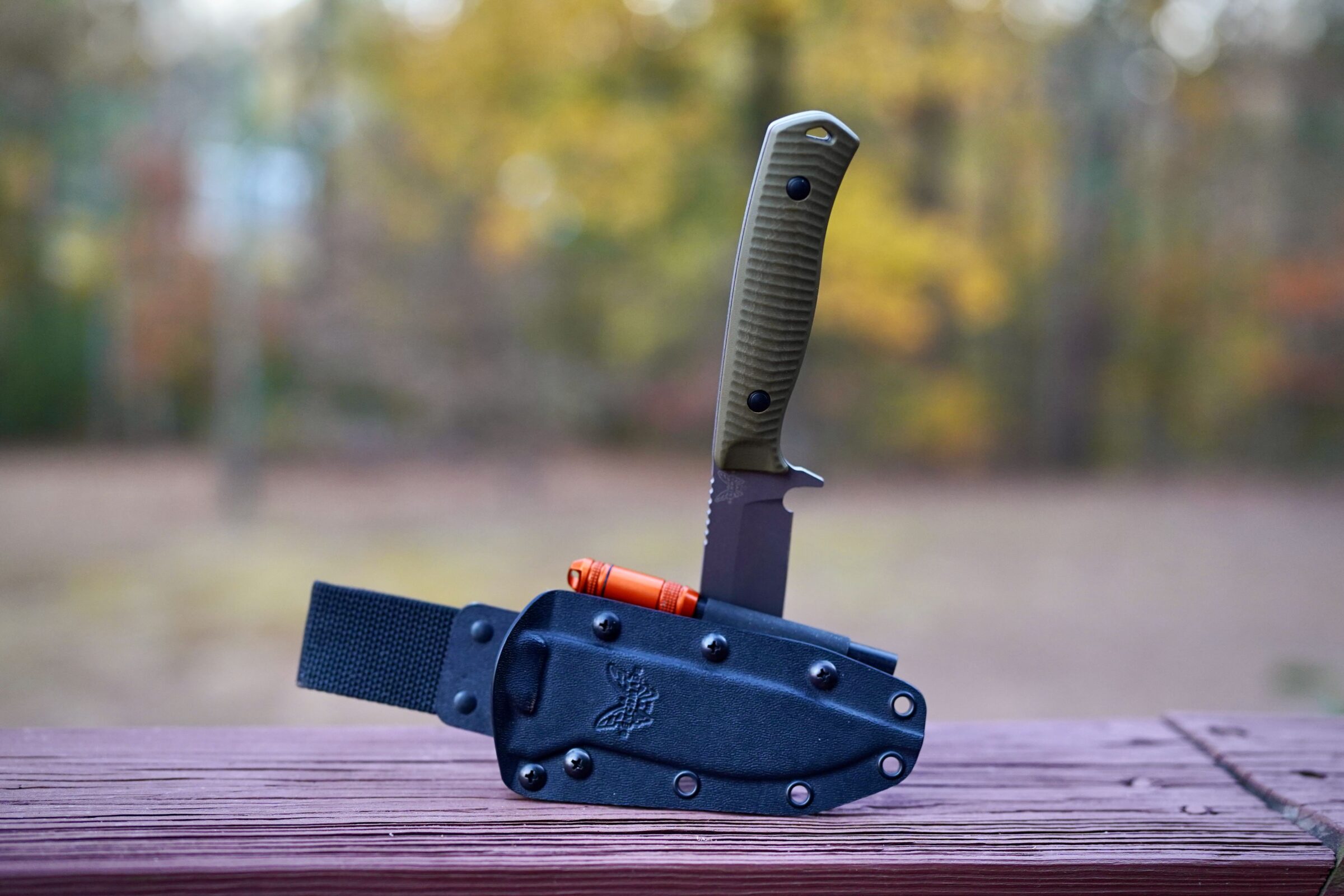
The Exotac Firerod is slim enough to slide into the ferro loops often featured on bushcraft knives. But the rod’s handle still leaves room for a waterproof tinder capsule to store emergency tinder.
If your ferro rod doesn’t come with its own striker, you need to ensure that you have a sturdy knife or spare striker on hand if you plan on bringing it along. Ferro loops on the sheaths of bushcraft knives are helpful additions to ensure the whole family stays together. Many ferrocerium rods will have a black protective coating on them when they come out of the box, which will need to be scraped off before use.
Ferro Composition
Ferro rods are constructed with different metals, which make it easier or more difficult to scrape depending on the composition. Softer rods don’t have as long a lifespan but generally provide more sparks with each strike. Most ferro rods are made with about 50% cerium, with various ratios of lanthanum and iron making up the rest of the mixture.
Don’t Forget the Tinder
A ferro rod doesn’t create a flame when struck, so it’s important that the tinder bundle you use is as dry and flammable as possible. To make this process easier, it’s a good idea to carry some highly flammable tinder in your survival kit, such as cotton balls coated with wax, Vaseline, or dryer lint, but there are plenty of natural resources that can be used in a pinch.
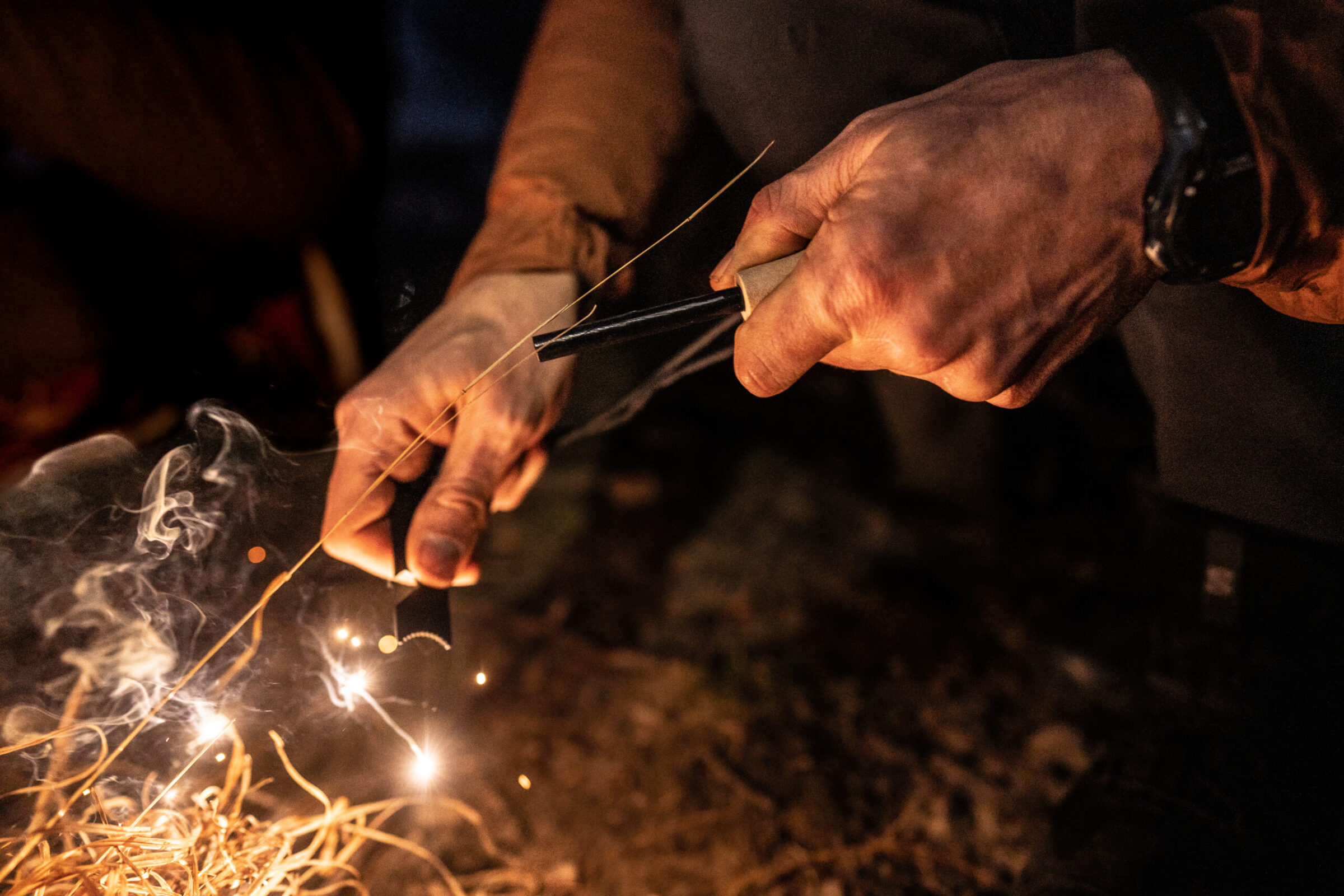
Magnesium Bars
Often referred to as “mag bars,” this is a bar or block that has a ferro rod attached. Instead of having to gather a tinder bundle that will catch a spark, or bringing cotton balls, you can use magnesium shavings from the bar as much of your tinder bundle, which will ignite with a spark from the ferro rod.
Some mag bars come with their own striker, but you can use the back side of your bushcraft knife to shave off magnesium and strike the ferro rod. Avoid using the sharp end of your knife for this, as it could dull or damage it significantly.
The SOL Mag Striker is the only traditional “mag bar” on our list, but it was an integral addition, as it’s one of the best ways to start a fire in damp conditions.
Firemaking Tips

Fire is such a basic, fundamental element to human existence, but can be surprisingly hard to make — particularly if the weather is against you. It’s important to practice using any firestarter that you plan on having in your emergency kit beforehand, as matches and lighters can fail on adventures.
Tinder
Whether using flint & steel, a ferro rod, or a mag bar, you will need a bone-dry bundle of tinder to catch your spark and transfer a flame to larger kindling. Fatwood shavings, birch bark, cattails, dry fluff from plants, or dried animal dung often work well as tinder bundles.
Many firestarters, such as Exotac’s Firerod and Prepared4X’s Survival Torch, come with dry, often water-resistant tinder that makes this important step much easier. You can also premake tinder bundles to store in your kit by soaking cotton balls in wax or gathering dryer lint from home in a waterproof container. Others, like the outdoor element Firebiner, require a separate purchase of tinder, so be sure you bring it along (or can gather it) if it doesn’t come with your firestarter of choice.
Consolidate plenty of medium-sized dry kindling (preferably from conifers) and have it on hand to build up your fire once you establish a flame in your tinder bundle. Make something of a “bird’s nest” with your pile of tinder, using fluffed-up dry materials. Place fatwood shavings or a feather stick (a stick that has been shaved to produce clusters of thin curls protruding from the wood — see illustration above) on top of the bird’s nest.

Creating a Spark
Once you have a tinder bundle you like, hold the scraper at a 45-degree angle to your rod, with the end of your rod almost touching your tinder. Pull the rod — not the scraper — back sharply. This allows you to get sparks closer to the tinder. Thus, it makes it easier to control where the sparks are spraying.
When a spark ignites your tinder bundle, it should produce a strong but short-lived flame. Resist the temptation to immediately blow on a spark or small flame, as you could easily extinguish it before it has a chance to catch any bigger fuel.
Allow the Flame to Grow
Build a teepee of small match-sized twigs and pencil-sized kindling over the growing flame, which encourages the flame to go upward. Gradually add bigger and bigger sticks and logs until you’ve established a solid base of embers and heat.
Blowing slightly on your fire near the beginning can help, but only after the flame has caught and the tinder is smoldering. Be sure not to blow out a new small flame in an effort to give it more oxygen. If there is adequate airflow, the flame will do its job and move on to bigger dry fuel.
Reliability
The problem with matches and lighters is their reliability. Once they get wet, too cold, or too high in altitude, they don’t work well, unless they are made to weather abuse like the UCO Titan Stormproof Match Kit.
Getting a reliable firestarter in all conditions and environments helps ensure you won’t be left shivering on the ground with an empty stomach after a long day of trekking. We would feel comfortable relying on all of the firestarters on this list in the backcountry. Though some are better suited for a backup lightweight “survival kit” than others.
Price & Value
Just as with every piece of gear, price matters. Determining a budget before even browsing your options is important to help you get the best firestarter for your needs. Firestarters on this list range in price from $4 to almost $250. We cover a broad range of firestarter types in this guide. Our “Best Budget” option doesn’t offer the same level of versatility as some of the traditional ferro rods we cover.
Think about the type of trips you plan on using your starter on. Use this to help formulate a budget and narrow in on the best firestarter for your needs. But don’t buy something just because of a high price tag. It doesn’t always mean it’s the better piece of gear. Price can be a reflection of quality, but it can also lead to unnecessary and over-the-top products.
Budget
A few firestarters on this list fall below the $15 mark. Our best budget option is the Light My Fire MayaStick-on-a-Rope ($4). Our best natural option, the UCO Stormproof Sweetfire Fire Starter Points ($6), is also affordable. Both are easy to use in most conditions and proved fairly reliable in our testing.
The UCO Stormproof Kits (Stormproof Matches and Sweetfire Points) only make as many fires as the matches and points included in the kits. Their ease of use, however, increases their value for certain uses. The SOL Mag Striker comes with a bottle opener. At $13.50, it’s hard to beat the value of a fun kit that’s been tested to produce over 100 fires. The outdoor element Firebiner ($15) says it lasts for 3000 sparks, but we have yet to verify that. If it does, that’s a great value for a reliable spark producer.
Mid-Tier
The majority of options on this list fall within the range of $20-33. For most of them, their value increases when you consider the number of uses you’ll get out of your kit. For magnesium bars and ferro rod-style firestarters, consider how many strikes you’ll get out of the material.
The UST BlastMatch gives you 4,000 strikes. while our best overall pick, the Wolf & Grizzly ($27), gives you 20,000. And if that’s not your primary concern, consider whether the kit has multiple uses. The Morokaniv Companion Spark is literally a knife, so the added value there is apparent.
Premium
Apart from the Bernzomatic Torch ($99), none of the firestarters on this list will take a chunk out of your wallet. These firestarters are high-tech and use fuel, also, which makes it a bit trickier to gauge their long-term value.

Frequently Asked Questions
The best firestarter is the one that best fits your needs and your budget. The firestarter that you feel comfortable using when you need it to work, and doesn’t cost a fortune, is the best firestarter. The best firestarter is one that helps you skip having to learn how to start a fire with sticks and friction alone.
Firestarters all work in different ways. A flint and steel method, or a striker and fire rod made from different materials, will work with simple science.
The hardness of the two materials and the contact between the two results in sparks. Your striker needs to be harder than what you are striking it on.
While the firestriker scrapes away a bit of the fire rod, the ripping apart of the material and the friction of the two objects both play a part in shooting small, insanely hot pieces of metal in the direction you want them to go. They stay hot enough in the air (hopefully) to reach your tinder and transfer heat into the dry tinder, resulting in a fire.
Bear Grylls teamed up with Gerber to make his idea of the best possible firestarter for survival. They came up with the Gerber Bear Grylls Survival Series Fire Starter, which is essentially the Gerber Fire Starter that we reviewed above, plus his initials. While this is what he came up with, we can imagine Bear used a wide array of different firestarters to figure out what works best for him.
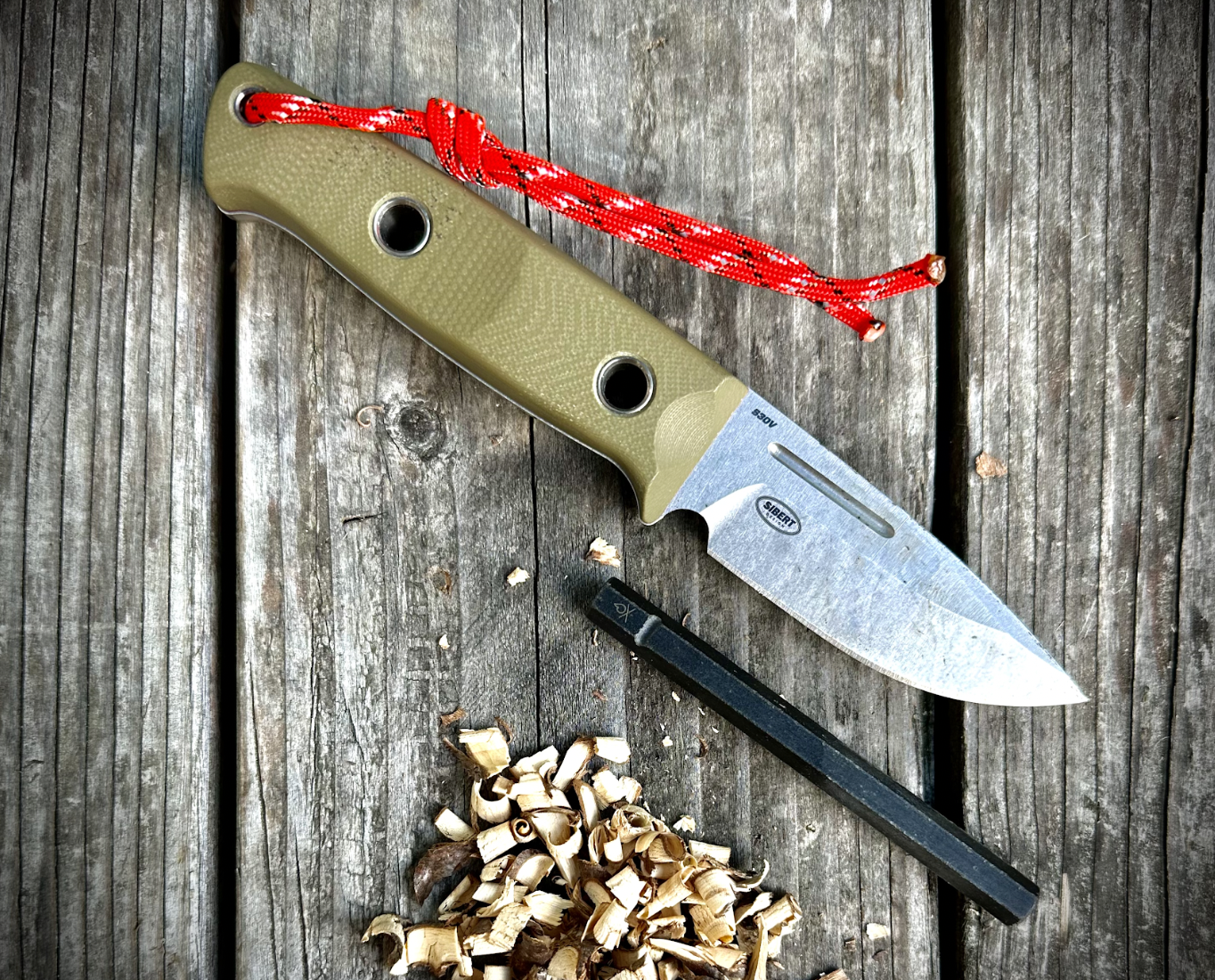
The Best Bushcraft Knives of 2025
Whether splitting logs or whittling by the fire, we’ve found the best bushcraft knives for every budget and use.

The Best Backpacking Stoves of 2025
The right stove makes life on the trail better. From ultralight canisters to four-season and multifuel options, we’ve found and tested the best backpacking stoves.
